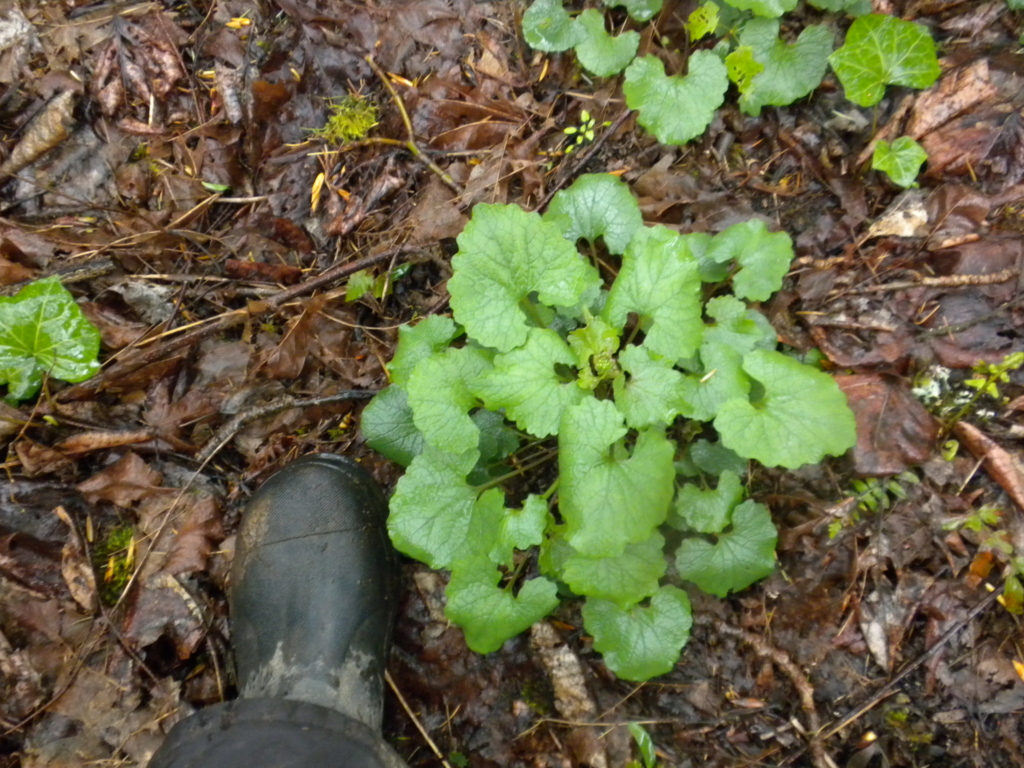Garlic Mustard
Alliaria petiolata
Plant Description
Garlic mustard is a biennial herb native to Europe that has become a highly invasive species across North America. It thrives in shaded forests, floodplains, and disturbed soils, where it quickly forms dense stands that outcompete native understory vegetation. The plant emits a distinct garlic odor when crushed and produces allelopathic chemicals that inhibit the growth of mycorrhizal fungi essential to native plant communities. Its prolific seed production and ability to persist in seedbanks make garlic mustard particularly challenging to control, posing a serious threat to forest regeneration and biodiversity.
If you find a plant you suspect is garlic mustard in Marion County, please submit a report to the Oregon Invasives Hotline: https://oregoninvasiveshotline.org/reports/create
Plant Details
| Life Forms | |
|---|---|
| Habitats | |
| ODA Listing | |
| Suggested Actions | |
| Shade Preference | |
| Mature Height | 4' |
| Distribution | Not known in Marion County. Populations are established in counties to the north and south. |
| Control | Garlic mustard can be pulled by hand as long as the soil is moist and the seeds aren’t popping. Take care to remove the entire root system; plants can regrow from root fragments left in the soil. Mowing is not an effective method for controlling garlic mustard as plants are capable of re-growing multiple times in a season. It can also spread easily by mowing if seeds are present. If the infestation is small, mulch with wood chips to control the spread of garlic mustard. Be sure to use a solid layer at least 3 inches deep for best results. |
| Disposal Methods | Discard of flowering or seeding plants in a sealed plastic bag in the garbage. Be careful to clean off clothes and gear before leaving infested sites. |
| Reproduction and Spread | Garlic mustard reproduces by seed and one plant can produce up to 1,000 seeds. Seeds form in May and June and begin spreading by late June. They can remain viable for up to 10 years. Once a plant has gone to seed, it will die that same season. Seeds are spread primarily by human activity, soil disturbance, and animals. Often new growth can be seen spreading along game trails and foot paths. Garlic mustard can self-pollinate. |
| Introduced | Introduced from Europe as a food plant. |
| Look Alikes | fringe cup, piggy back plant, money plant, nipplewort |
| Impact | It outcompetes native vegetation and it can establish in a relatively stable forest understory. It can grow in dense shade or sunny sites. Plant stands can produce more than 62,000 seeds per square meter to quickly outcompete local flora, changing the structure of plant communities on the forest floor. Garlic mustard is allelopathic, producing chemicals that inhibit the growth of other plants and mychorrizal fungi needed for healthy tree growth and seedling survival. |
| More Info |


